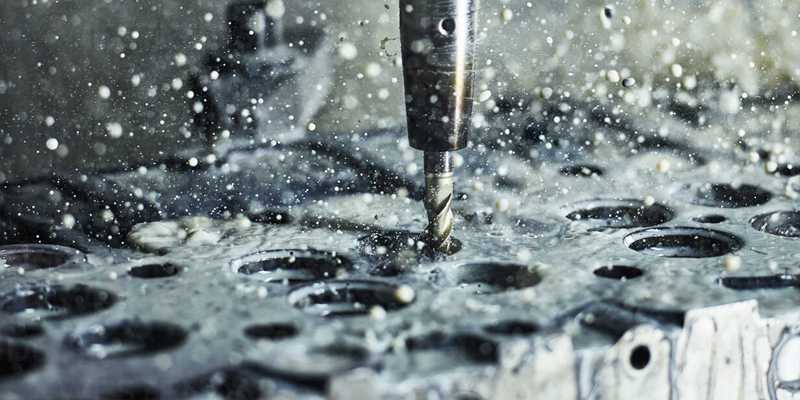- September 2, 2022
CNC drilling is a machining process applicable in making holes in parts. As a result, it is critical in part fabrication and product manufacturing, especially with products having different parts which need assembling. This article will discuss the process, types of machines, and applications in part manufacturing.
What is CNC Drilling?
This CNC machining process uses a rotating cutting tool or drilling bit to make holes in a product. The hole takes the dimension of the CNC drilling bits and is most time applicable in accommodating screws and bolts. As a result, the process is common among products that need part assembly. Aside from that, they are suitable for aesthetics.
How Does CNC Drilling Process Work?
CNC hole drilling has a mechanism similar to other CNC machining operations, like boring machining. Below is a stepwise procedure on how the drilling operation takes place:
Step 1: Prepare a CAD File
The first step in the drilling operation is to design a CAD file for the CNC drilled component using software such as Autodesk Inventor or SolidWorks. The CAD file will give the operator technical information about the components, such as tolerance, dimensions, etc.
Step 2: Export Your Design in a CNC-compatible File Format
CNC machines can only understand forms such as STEP and STL. As a result, you have to convert the created CAD file to a compatible format. Some software has this inbuilt feature. However, for those that don’t, you can use an online file conversion service. The file will control the machine’s rotational and linear movement, toolpath, speed, and other functions.
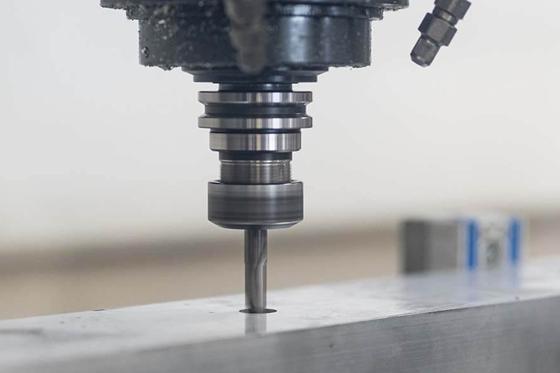
Step 3: Set up the Machine
Set up the drilling machine by attaching the CNC drilling bits. Afterward, secure the workpiece to the machine. Finally, execute the drilling operation and watch the machine performs its function. On completion, evaluate the drilled component and the possibility of errors or imperfections.
Types of CNC Drilling Machine
Several types of drilling machines are used for the process, and like any other CNC machine tool, each has its features and capacities. Here are the common machines you can use and their basic and specific purposes.

1. Upright CNC Drill Press
The CNC upright drill press has a geared drive spindle head, and it’s the most applicable in drilling through heavy and large components. There is also a manual version. However, that requires the operator to feed the workpiece to the CNC drilling head.

2. Radial Arm CNC Drill Press
This machine has a movable spindle positioned over a stationary workpiece. As a result, it is more versatile and capable of performing several drilling operations unseen in the previous type.

3. Gang Drilling Machine
Gang drilling machines have several work drilling heads positioned over the work table. They are suitable for successive operations on a fixed workpiece.
4. Multiple Spindle Drilling Machine
This type of drilling machine has multiple spindles. As a result, you can simultaneously attach several drilling heads and drill through a workpiece. These are the most common machines in many CNC machining service providers and are suitable for making components with many holes.
5. Micro Drill Press
Micro-drill presses have high accuracy. They have small chucks. As a result, they are suitable for drilling into components that require high tolerance and accuracy.
6. Turret-type Drilling Machine
This type of drilling machine has a turret with several work heads. As a result, they are suitable for drilling operations where there is a need to constantly change tools and tools’ positions over a workpiece.
Benefits of CNC Drilling
CNC hole drilling has many advantages over traditional drilling technology. Here are a few reasons to choose CNC drilling:
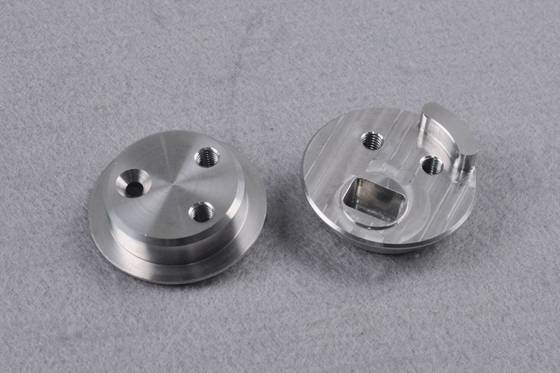
Higher Accuracy
The process is highly accurate compared to traditional drilling techniques. The automation rendered by the machines removes the need for human operation. As a result, there is little to no error. However, the degree of tolerance associated with the process depends on the sophistication of the machines.
Broader Versatility
The process is compatible with many materials, including plastic, metal, and other composite materials. Furthermore, some machines have features that make drilling operations better. A good example is the multi-spindle drilling machine that allows you to mount several drilling heads and make holes simultaneously on a workpiece.
Greater Reproducibility
CNC hole drilling is computer controlled, making it highly precise and accurate. As a result, manufacturers don’t have to worry about consistency with different batches of the same drilled component.
Considerations and Tips for Drilling a Hole
CNC drilling also has a few challenges, necessitating machinists to understand the process. Here are a few tips for drilling holes.
Tip #1: Select the Right CNC Drilling Head
Many drill bits are based on the material, structure, and functions. As a result, choosing the right CNC drilling head might be challenging and is a common cause of many drilling defects. You can ensure you made the right drilling head by checking for compatibility using the abovementioned factors. A better option would be to talk to a drilling expert or service provider about the best approach.
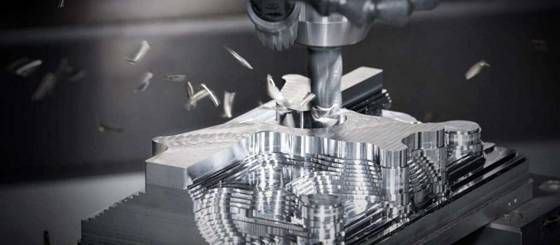
Tip #2: Chip Removal and Breaking
Chips must be effectively discharged during and after the CNC hole drilling process. Controlling them is very important, as they can create several problems. Here are a few things you can try out:
- Use a specialized chip breaking bit: This will break the chips and make them easier to remove. Furthermore, breaking them into smaller chips improves heat dissipation and drilling operation.
- Increase the feed.
- Use an intermittent feed.
- Install a chip breaker.
Tip #3: Feeds and Speeds
Ensure you figure out how to cut speed and feed rates to guarantee production efficiency. These factors depend on the cut shape and material type.
CNC Drilling vs. Thread Tapping: What's the Difference?
CNC drilling and thread tapping are suitable for making holes in a workpiece. However, both are different in the type of holes they make. Understanding the difference between the two is possible by understanding the process.
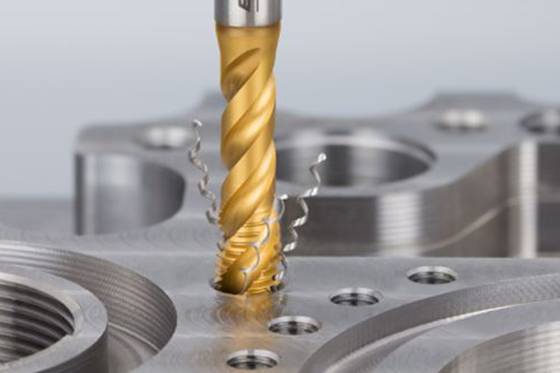
As explained before, CNC drilling uses machines to make a hole in a workpiece by forcing the drilling bit into the workpiece. On the other hand, thread tapping is the creation of a threaded hole, where a tap is used to create a continuous spiral ridge in the workpiece.
Therefore, the most important difference between them is that CNC drilling involves creating a hole, while thread tapping involves creating threads within an existing hole.
Furthermore, another key difference between CNC drilling and thread tapping is the type of drill bit that is used. CNC drilling generally uses a twist drill bit, while thread tapping generally uses a tap drill bit. Tap drill bits are designed specifically for creating threads, and as such are not suitable for use in CNC drilling applications.
Applications of CNC Drilling
CNC hole drilling has wide applications. Below are a few applications of the process industry-wise:
Sheet Metal Fabrication
The process is suitable for drilling into automobile, aerospace, and construction parts – for example, the dashboard, engine, etc. It is accompanied by other CNC machining processes, such as milling and lathing.
Wood Manufacturing
Drilling operations are a critical part of wood manufacturing. With the machine, wood manufacturers can enjoy automation, accuracy, precision, and high tolerance. Additionally, the industry values aesthetics, something that the process assures.
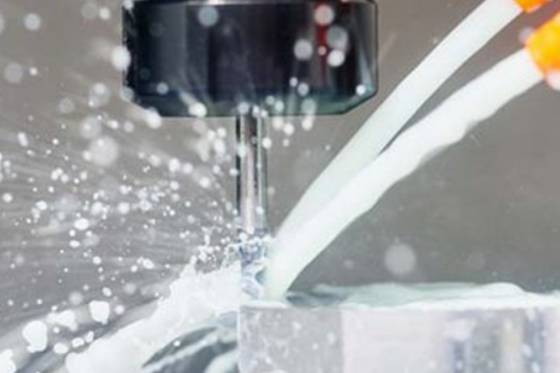
Computer Parts and Components Manufacturing
This industry uses CNC drilling when manufacturing computer parts and components. These parts need holes since they are majorly assembled, and precision obtained from the process is critical.
CNC Drilling Services for Precision Machined Part
CNC drilling is a critical machining process in several industries due to its precision. However, several factors, such as the high initial cost of investment, operational error, and maintenance, make purchasing a drilling machine not cost-effective. As a result, outsourcing to a custom CNC machining service provider is a better approach.
At WayKen, we offer custom manufacturing services that can help you make precision-machined parts. This is not only limited to CNC drilling. We also specialize in other processes, such as CNC machining services, sheet metal fabrication, 3D printing, and injection molding.
Whether you need to drill, tap, or other finishes for your parts, we will meet your needs with high-quality standards. So, upload your CAD file today, and get access to quality service at competitive pricing and fast lead time.
Conclusion
CNC drilling is a suitable process for making holes in products and parts. Like any CNC machining process, it is accurate, precise, and has a low tolerance. As a result, it is an important process in product manufacturing that requires part assembly. This article introduced the process, how it works, and several tips that can help you. Do your parts require CNC drilling? Let us help you get started.
FAQs
What type of drill is used for deep holes?
The most common drill for making deep holes is the parabolic-flute drill. This is because of its larger flute opening, those aids in chip evacuation.
What is the difference between CNC milling and drilling?
CNC hole drilling involves cutting through a workpiece vertically, while milling allows you to cut horizontally, diagonally, and vertically.
What is threading in drilling?
Threading is used to make holes for a bolt to pass through. It is achievable in CNC machining via several processes such as CNC milling, drilling, and thread tapping.

